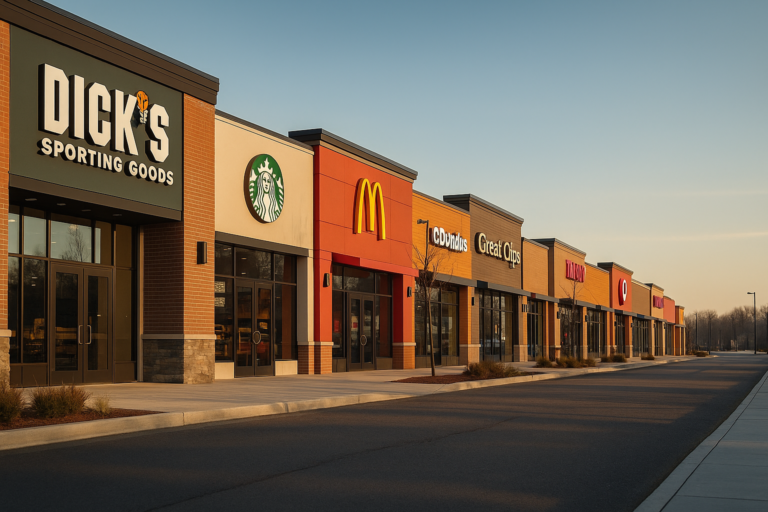Tailoring Franchise Marketing for Multi-Location Success: Proven Frameworks That Drive Results

- 1. 1. Adapting Media Plans to Market-Specific Needs
- 2. 2. Leveraging Data to Inform Location-Level Decisions
- 3. 3. Balancing Brand Consistency with Local Customization
- 4. 4. Expanding Channel Diversity for Full-Funnel Coverage
- 5. 5. Enhancing Collaboration Between Corporate and Local Teams
- 6. Key Takeaway: Multi-Location Marketing Demands Flexibility
Managing multi-location businesses effectively requires more than a one-size-fits-all marketing approach. Franchise organizations face unique challenges, including geographic disparities, varying local demand, and the need for consistent branding across locations. To overcome these hurdles, brands must adopt adaptive, data-driven frameworks that maximize impact at both the local and enterprise levels.
Chad Rader, Group Director for Consumer Services at Power Digital, emphasizes the importance of moving beyond traditional, blanket strategies. “What we experience more of now is… my general manager at this location’s really struggling with new patients or new appointments, and it’s like, I understand that, but you’re focused on two channels that capture existing demand,” Rader explains. “We’ve got to create more demand and awareness… you have to have an iterative media plan.”
In this article, we’ll explore proven frameworks that help franchises optimize their marketing strategies, generate more demand, and boost revenue across multiple locations.
1. Adapting Media Plans to Market-Specific Needs
Franchises often fall into the trap of applying the same media strategy across all locations, assuming what works in a high-demand market will deliver the same results in a smaller, less saturated area. However, this one-size-fits-all approach overlooks the nuances of local demand.
Rader highlights the pitfalls of this mindset: “What they run into with multi-location is obviously there’s geographic anomalies [and] competition to take into account. Some are going to be higher velocity than others, and many times clients and partners don’t quite understand how to account for that.”
To drive success, franchises need to implement iterative, location-specific media plans. For instance:
- High-demand markets: These locations benefit from demand-capture strategies, such as paid search and retargeting campaigns. Since demand already exists, the goal is to maximize conversions from those actively seeking products or services.
- Low-demand markets: Here, the focus should shift to demand-generation tactics, such as localized paid social campaigns, influencer collaborations, and community-based sponsorships. These channels build awareness and attract new audiences, helping to fill the top of the funnel.
By tailoring the media mix to each market, franchises can optimize ad spend efficiency and avoid oversaturating mature locations while under-investing in emerging ones.
2. Leveraging Data to Inform Location-Level Decisions
Effective multi-location management relies heavily on data insights. Franchises must monitor individual location performance, market trends, and customer behaviors to make informed decisions. A data-driven approach enables brands to identify underperforming locations, allocate resources strategically, and refine marketing strategies in real time.
For example, by analyzing location-specific data, a franchise may discover that one region performs better with Meta ads, while another sees stronger results from Google Search. Rather than forcing all locations into a uniform channel strategy, the franchise can customize ad placements and budgets based on what delivers the best ROI locally.
Rader underscores the need for this nuanced approach: “Maybe you need additional channels within some of these smaller locations to generate more demand… because you’re not getting it at the bottom of the funnel.” This highlights the importance of expanding beyond Meta and Google in low-demand regions, where top-of-funnel awareness plays a critical role in driving conversions.
Unlock the Power of Data Intelligence
Leverage advanced data science to measure and optimize your marketing impact at every level.
3. Balancing Brand Consistency with Local Customization
While customization is essential, franchises must also maintain brand consistency across locations. This is particularly important for larger, well-known franchises, where disjointed messaging can dilute the brand’s identity.
A successful framework strikes the right balance:
- Brand-level consistency: Centralized assets, such as logos, color schemes, and core messaging, remain uniform across all locations. This ensures cohesive branding and customer familiarity.
- Location-specific customization: Individual locations can tailor offers, promotions, and content to reflect their specific market conditions. For example, a franchise in a beach town might promote summer specials, while an inland location focuses on back-to-school campaigns.
By empowering local managers with the flexibility to localize their marketing while adhering to brand guidelines, franchises can enhance relevance without sacrificing brand integrity.
Unlock Your Most Profitable Customer Segments
Learn which buyers drive the biggest ROI—and how to double-down on them with a proven, profit-first strategy.
4. Expanding Channel Diversity for Full-Funnel Coverage
Many franchises rely too heavily on a limited number of marketing channels—typically paid search and social ads. While these platforms are effective for capturing existing demand, they often fail to generate new demand in less competitive or lower-volume areas.
To overcome this, franchises should expand into complementary channels that support full-funnel coverage:
- Top of funnel: Leverage programmatic display, YouTube, and CTV (connected TV) ads to build awareness.
- Middle of funnel: Use native ads, content syndication, and influencer partnerships to nurture leads.
- Bottom of funnel: Deploy retargeting, local SEO, and review-generation strategies to capture conversions.
This multi-channel framework ensures franchises aren’t overly dependent on just one or two platforms, making their marketing efforts more resilient to platform fluctuations.
Ready to take your marketing to the next level?
For brands and enterprise companies that demand digital marketing strategies with proven impact, Power is ready to be your partner in business growth.
5. Enhancing Collaboration Between Corporate and Local Teams
Successful multi-location marketing also depends on clear communication and alignment between corporate marketing teams and local managers. When corporate teams dictate strategy without local input, they risk missing market-specific nuances. Conversely, when local managers operate independently, they may create inconsistent or off-brand messaging.
Franchises that foster collaboration between corporate and local teams can strike the right balance. This includes:
- Shared reporting and analytics dashboards to provide both corporate and local teams with real-time insights.
- Centralized brand assets with customizable templates for local managers.
- Regular strategy reviews to align corporate initiatives with local feedback and market conditions.
By improving collaboration, franchises can ensure their marketing efforts remain strategic, consistent, and market-relevant.
Key Takeaway: Multi-Location Marketing Demands Flexibility
Managing marketing for multi-location franchises requires a flexible, data-driven approach. Brands that iterate their media plans based on location-specific demand, expand their channel mix, and prioritize collaboration will be better positioned for long-term success.
As Rader points out, “You have to have an iterative media plan… [because] it’s not applicable for all your markets, but it is for some.” By embracing adaptable frameworks and localizing strategies without losing sight of the larger brand vision, franchises can optimize performance across all locations and drive sustainable growth.
Ready to learn more? Contact Power Digital today to explore digital marketing services that drive results!
Our Editorial Standards
Reviewed for Accuracy
Every piece is fact-checked for precision.
Up-to-Date Research
We reflect the latest trends and insights.
Credible References
Backed by trusted industry sources.
Actionable & Insight-Driven
Strategic takeaways for real results.


















